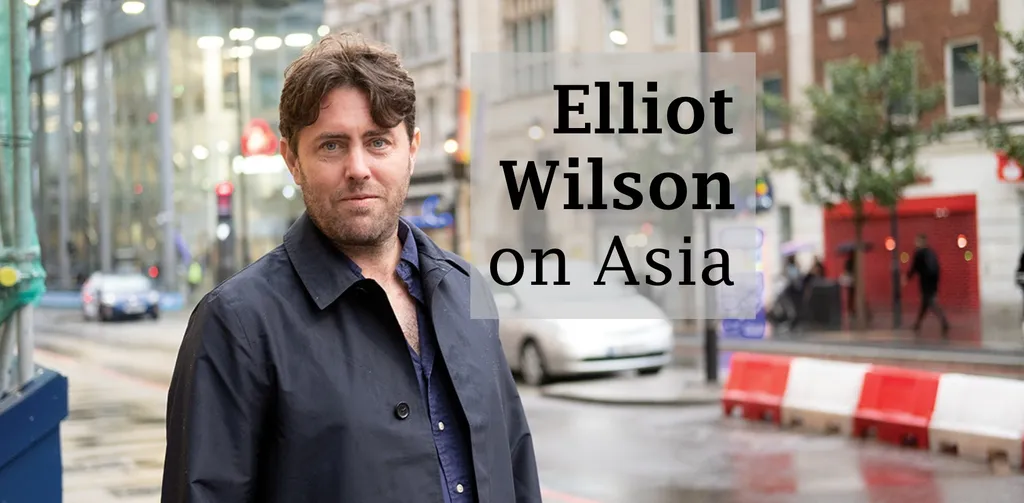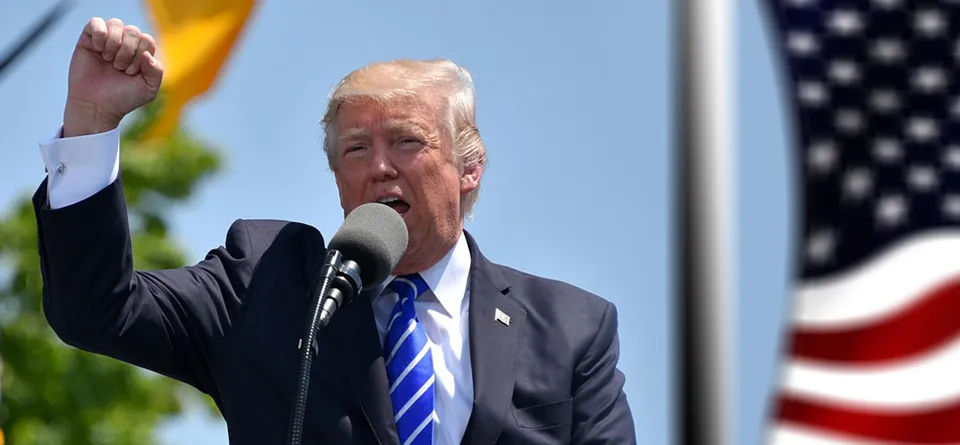The anti-lockdown protests currently roiling China’s biggest cities are a direct affront, if not yet a true threat, to the administration of president Xi Jinping. They are also a clear rejection of his suffocating and increasingly unpopular ‘zero-Covid’ policy.
And they are a stark reminder that China’s epic transformation into an economic superpower over the span of a few decades has been anything but seamless and linear.
Pre-Covid and in the first two years of the pandemic, it became popular to assume two things.
First, that there must be something to admire, even emulate, about its centralized political system. While the West struggled with low growth and social discord, China motored along. Its economy has grown every year since 1976, the year Chairman Mao died.
Second, that the ruling Party surely had a long-term plan, and a remarkably effective one at that. Look at that economic data, the brimming foreign exchange war-chest. Some in the US and Europe began to question why their own leaders weren’t as competent, ambitious, even ruthless.
China’s Leninist operating model certainly loves a good five-year plan. We’re halfway through its 14th iteration, running through 2025, with its aim of building a more sustainable and higher-quality economy less dependent on imports of food and energy, and capable of driving innovation in everything from AI to quantum computing.
Response
But this ‘grass is greener where growth is’ view of China was always too simple. In reality, Beijing has at key moments in the modern era benefited, not from its own far-sightedness and nation-building prowess, but rather from the leniency and kindness of others.
Rewind to 1989, and to the massacre of perhaps thousands of civilians in Tiananmen Square. In the wake of those events, US officials gathered to discuss their response.
The consensus was that China should retain its ‘most favoured nation’ status, enabling its goods to continue to enter the US at the same tariff rate as other countries. Above all, wrote Jeffrey Bader, a senior fellow at the Brookings Institution and veteran expert in US-China relations, in a 2019 essay, it should not be driven “back toward isolation, autarky, and hostility”.
Had Washington bared its teeth, would the country have embraced global trade and twisted itself in knots trying to embrace capitalism? Or would it have wound up becoming a pariah state in the Iran mould? Growth would have come, but more likely in fits and starts.
Now spin forward to 2001, and the decision to let China join the World Trade Organization. US officials who championed the cause came to regret giving it unfettered access to the international trade system.
Rattled by a jammed-up economy, stalled exports, slumping consumption, a distressed property sector, and now an increasingly irate populace, it needs a pathway back to normality
On the one hand, the move slashed the cost of imported goods for US and European consumers. On the other, it accelerated Western de-industrialization.
For its part, China exploited WTO loopholes, ignored rules when it could, and activated a go-slow approach to dishing out new or expanded licences to foreign financial firms.
As former World Bank chief economist Justin Yifu Lin noted the time, Beijing agreed to let foreign banks “set up branches in all… cities in China, conduct local currency business, and provide retailing services”. Nothing of the sort happened: today, foreign banks have a combined market share of China’s banking sector of around 2%.
When the Party has set about making landmark decisions that shape and define its future, it has a decidedly mixed record of success.
Bailing out and listing its big state lenders in the mid 2000s went ahead without a hitch. A vast stimulus package unveiled in the wake of the global financial crisis fended off short-term recession but spawned a misshapen economy and left those same banks bloated with debt.
Its biggest own goal was surely the one-child policy. Implemented in 1980, its legacy is a slow-motion demographic crisis. The United Nations tips China’s population to shrink this year for the first time since the 1960s – a decade ahead of schedule. The working age population is projected to slump from 80% of the total today, to 30% by 2100.
Which brings us to now, and to its lurching attempts to extricate itself from zero-Covid.
Simmering anger against Xi’s stubborn adherence to a strategy that no longer works boiled over on Sunday (November 27). Protestors in Beijing and Shanghai held up white pieces of paper in a rare show of defiance against mass testing, quarantine camps and months of snap lockdowns.
Pathway to normality
Authorities are now mired in a mess of their own making. Since early 2020, their approach has been to seek to eliminate the virus at home, while all but shutting the world out.
At first, state media gloatingly compared soaring death rates in the developed world with a dearth of cases across the mainland. In the end, all this did was to create its own monster.
Today, Beijing is stuck. Rattled by a jammed-up economy, stalled exports, slumping consumption, a distressed property sector, and now an increasingly irate populace, it needs a pathway back to normality.
So far, its efforts have not been successful. On November 11, desperate to open borders and let trade and growth in, authorities tried to soften restrictions by cutting inbound quarantine times and eliminating tracing of second-degree close contacts of positive cases.
All that did was let the genie out the bottle. Authorities reported around 32,000 new cases on November 26, a third consecutive daily record, imposed fresh lockdowns in key cities, and tightened travel restrictions on new arrivals.
Attempts to limit transmission is stymied by decades of under-investment in public health and low vaccination rates among the elderly – not to mention a yawning immunity gap, as most of China’s 1.4 billion people have never been exposed to the virus.
The net result is likely to be an exit from zero-Covid that could get very messy indeed. Today’s protests may run out of steam. Or this could be just the start of a long winter of discontent, as the Party seeks to placate protestors by, say, easing restrictions and scrapping mass testing, only to see the virus really let rip.
On November 21, Citigroup analysts upgraded Hong Kong to overweight in Asia, and turned bullish on Chinese stocks, citing reopening measures and improving investor sentiment.
They wrote too soon. Spooked by mainland protests, investors pushed markets lower a week later. Hong Kong’s Hang Seng Index opened 4% down. Shanghai’s Composite Index was 1.33% lower in the middle of afternoon trading.
Martin Petch, senior credit officer at Moody’s Investors Service, tipped protests to dissipate “relatively quickly”. But he added: “They have the potential to be credit negative if they are sustained and produce a more forceful response by the authorities.”
Meanwhile, among Hong Kong’s investment banking community, the mood ranges from nervous optimism to weary fatalism.
After a torrid year, senior bankers in the city are desperate for any kind of good news to ring in 2023. Many have spent the past three years shuttling to and from Shanghai, doing weeks of quarantine on both ends, and not seeing their families for months at a time.
For a city that lives and dies by the vibrancy of its stock market and its role as a financial bridge between China and the world, the experience has been harrowing.
Total Hong Kong IPO issuance in the current year to November 25 is $11.1 billion, according to Dealogic data, against $38.6 billion and $39.7 billion respectively in the same periods in 2021 and 2020.
During recent interviews, which pre-date the weekend’s protests, bankers were starting to sound a little desperate.
“Our big hope is the borders will reopen by March 2023, with a free-flow of people coming into and out of China,” said the head of Asia ECM at a global lender. “But seeing is believing. A lot of corporate executives and investors have not been in China for three years.”
Another senior Hong Kong-based investment banker said: “People are now realising it won’t be so easy for China to open up fast and fully. They’re beginning to sense that 2023 may be a year that involves some opening up but also a lot of new Covid restrictions.”
This isn’t at all where Beijing expected to be. By and large, the rest of the world has begun to move on from Covid. China not only has not, it cannot. It wants to reopen its borders and get its economy rolling again – but fears that doing so would result in a spiralling death rate and an even worse public backlash, in what would amount to a competency vote on Xi’s presidency.
So it is stuck.
A powerful ruling Party that loves to look like it knows what it’s doing suddenly looks like it has no plan at all.
That does not bode well.




